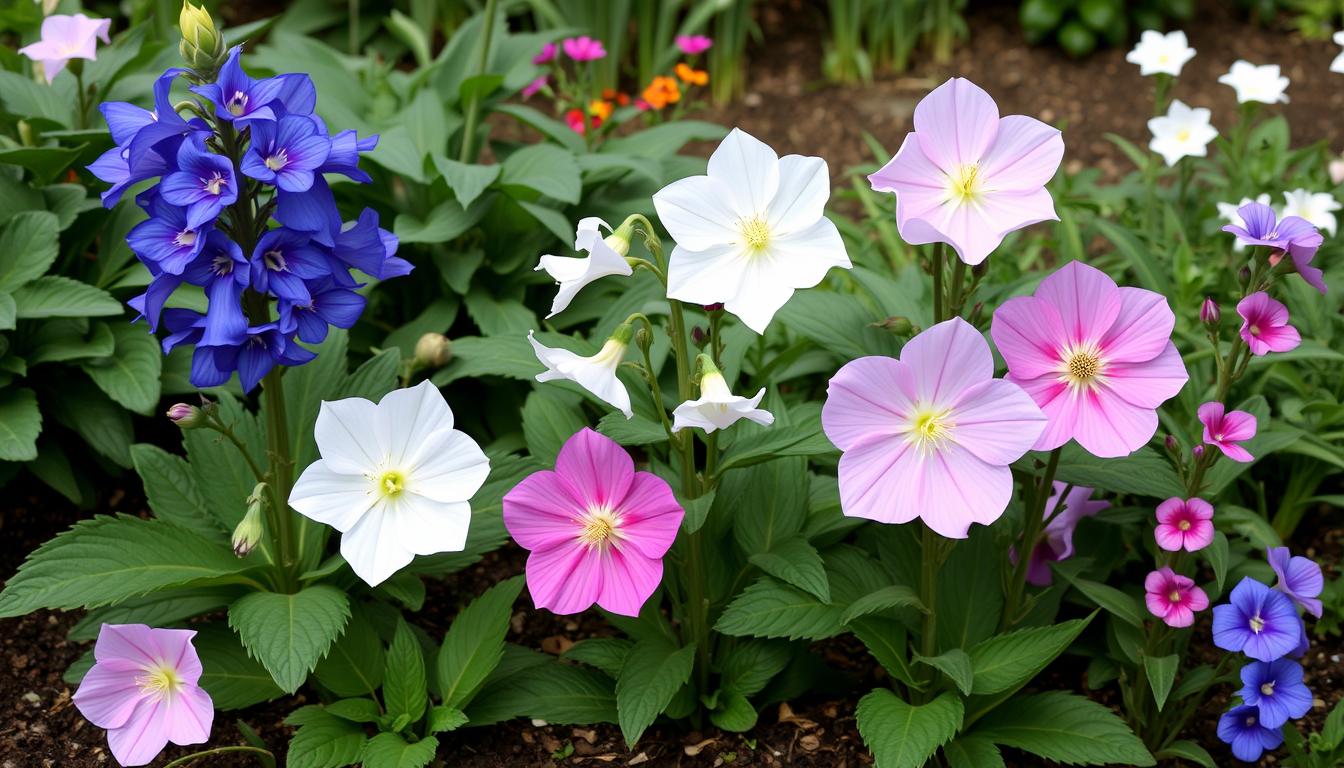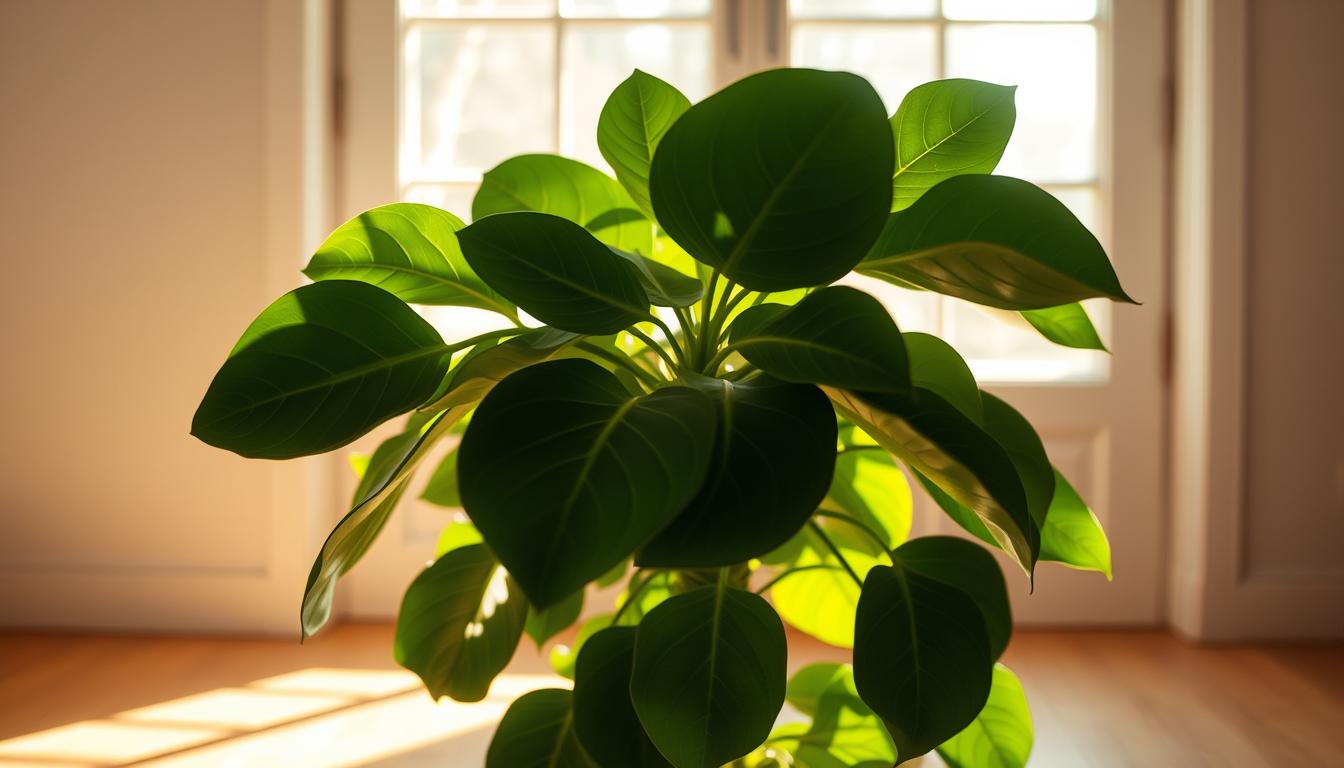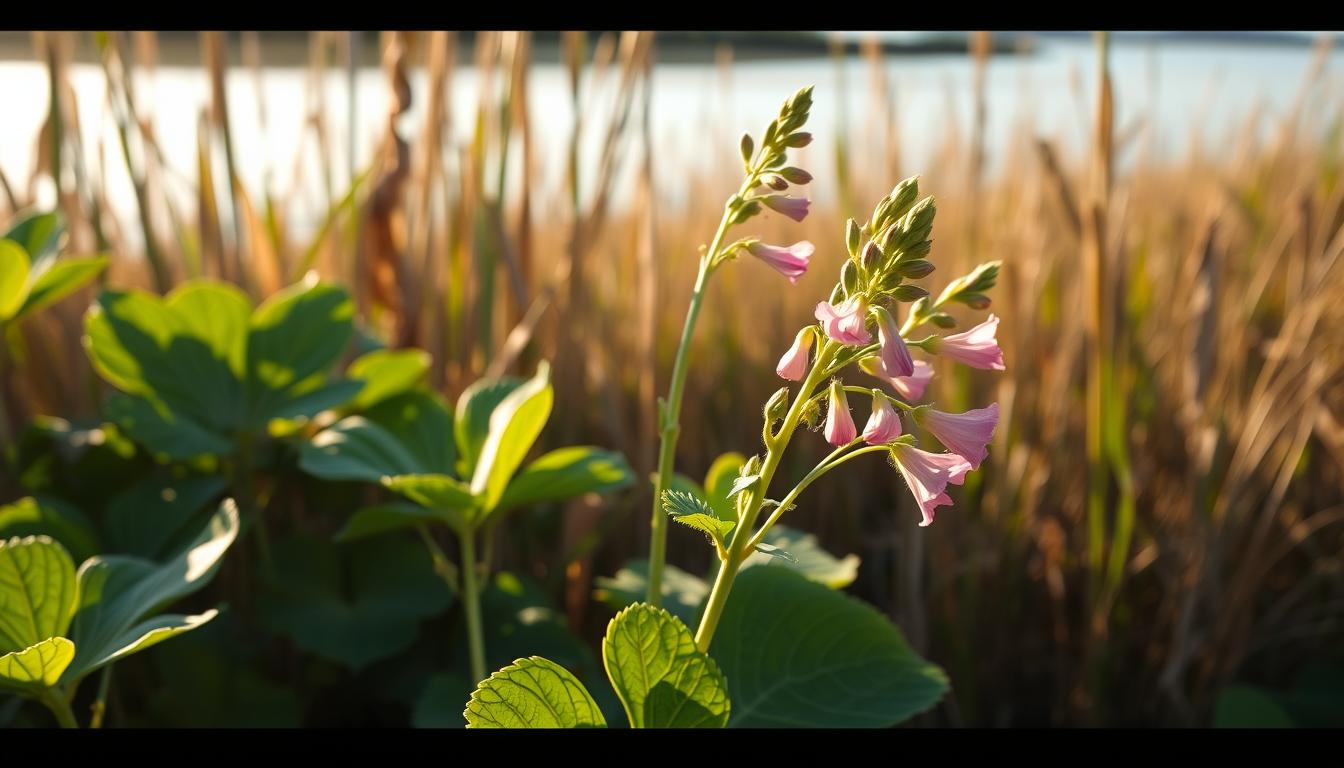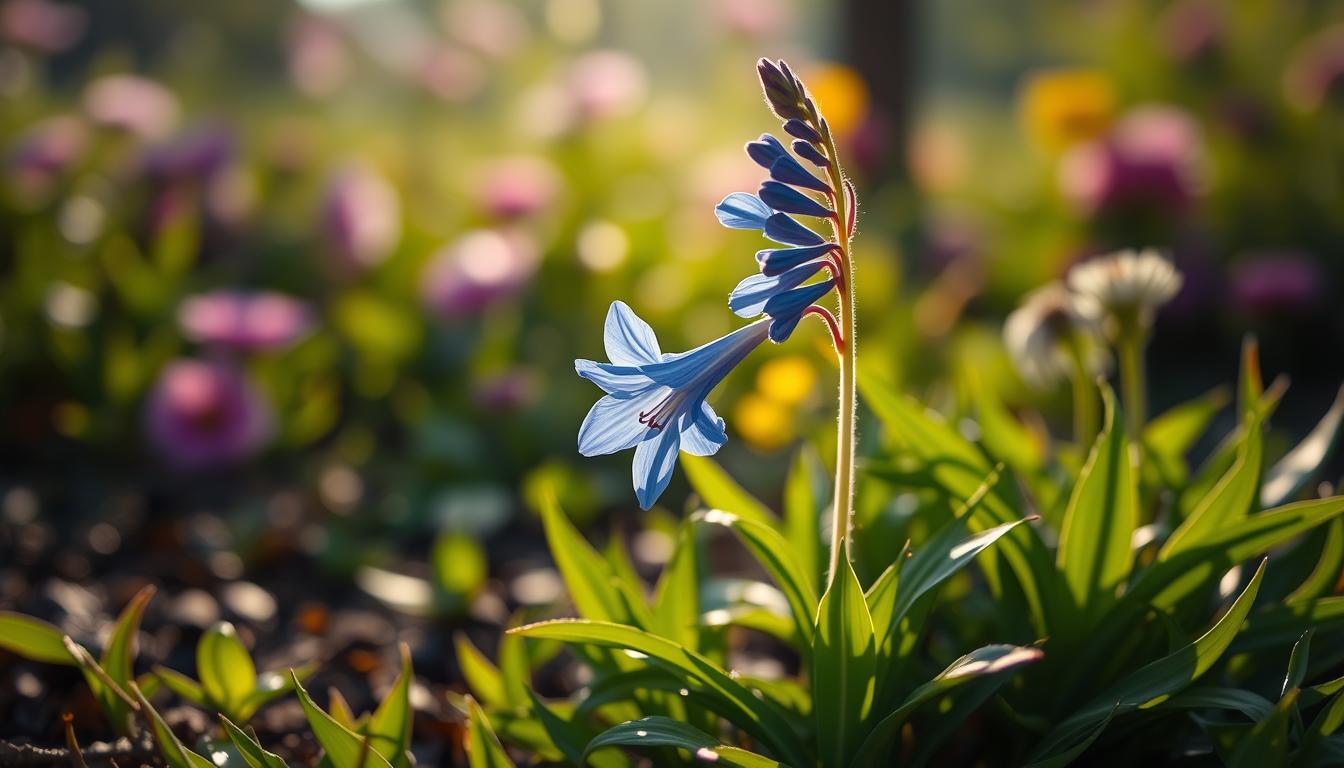How to Grow and Care for Balloon Flowers (Platycodon Grandiflorus)
Balloon flowers (Platycodon grandiflorus) are captivating perennials that get their name from the fascinating puffy, balloon-like buds that burst open into star-shaped blooms. Native to East Asia, these charming plants have been delighting gardeners for generations with their unique growth habit and vibrant blue-purple flowers. In this comprehensive guide, we’ll explore everything you need to know about successfully growing these cold-hardy perennials in your garden.
About Balloon Flowers
Balloon flowers are members of the bellflower (Campanulaceae) family, though their blooms don’t resemble traditional bells. Instead, they produce distinctive inflated buds that resemble hot air balloons before opening into star-shaped flowers with five pointed lobes. These hardy perennials typically grow 1-3 feet tall, forming neat clumps that return reliably year after year in zones 3-8.
In their native regions of China, Korea, Japan, and Siberia, balloon flowers have been used in traditional medicine for centuries. The roots, known as Platycodon or “jie geng,” are believed to have various health benefits. In garden settings, they symbolize unchanging love and honesty, making them meaningful additions to ornamental gardens.

Balloon flowers feature distinctive puffy buds that open into star-shaped blooms
Key Balloon Flower Characteristics
- Unique balloon-shaped buds that open into star-shaped flowers
- Primarily blue-violet blooms, with white and pink varieties available
- Long blooming period from early to late summer
- Cold-hardy perennial (USDA zones 3-8)
- Attracts pollinators including bees and butterflies
- Deer-resistant and relatively pest-free
How to Plant Balloon Flowers

Preparing well-draining soil is essential for successful balloon flower growth
Soil Preparation
Balloon flowers thrive in rich, well-draining soil with a pH between 5.5 and 7.5. They don’t perform well in dense, clay soils that retain too much moisture. Before planting, work in plenty of organic matter such as compost to improve soil structure and fertility.
Choosing the Right Location
Select a planting site that receives full sun to partial shade. In cooler climates, balloon flowers will flourish in full sun (at least 6 hours daily). In warmer regions, they benefit from afternoon shade to protect them from intense heat. These adaptable plants perform well in both garden beds and containers.
Planting Steps
- Dig a hole twice as wide as the root ball and just as deep.
- Carefully remove the plant from its container, taking care not to disturb the taproot.
- Place the plant in the hole, ensuring the top of the root ball is level with the soil surface.
- Backfill with soil, gently firming around the roots.
- Water thoroughly to eliminate air pockets and help establish the plant.
- Apply a 2-inch layer of mulch around the plant, keeping it away from the stems.
Pro Tip: Balloon flowers emerge late in spring, so mark their location in the fall to avoid accidentally disturbing them during spring garden cleanup.
Spacing Requirements
Space balloon flower plants 12-18 inches apart to allow for proper air circulation and growth. Dwarf varieties can be planted closer together (about 8-10 inches apart), while taller varieties may need more space (up to 24 inches).
Balloon Flower Care Routine
Watering Schedule
Balloon flowers prefer consistently moist but not soggy soil. Water deeply when the top inch of soil feels dry, typically once a week during the growing season. Established plants can tolerate short periods of drought but will perform best with regular watering, especially during hot, dry spells.
Fertilization
These plants don’t require heavy feeding. Apply a layer of compost in fall to replenish nutrients. For poor soils, use an all-purpose, slow-release fertilizer in early spring. Avoid high-nitrogen fertilizers, which can lead to leggy growth and fewer flowers.

Water balloon flowers at the base to avoid wetting the foliage
Winter Protection
In zones 3-4, apply a 3-4 inch layer of mulch after the ground freezes to protect the crown and roots during winter. In spring, gradually remove the mulch as new growth emerges. In warmer zones (5-8), standard winter protection isn’t necessary, but a light layer of mulch can help regulate soil temperature.
Ready to Add Balloon Flowers to Your Garden?
Find quality balloon flower plants and seeds from trusted suppliers with varieties to suit any garden style.
Shop Balloon Flower PlantsPopular Balloon Flower Varieties

Balloon flowers come in several colors and growth habits to suit different garden needs
| Variety | Height | Flower Color | Special Features | Best Uses |
| Astra Series | 8-10 inches | Blue, Pink, White | Double flowers with 10 petals; compact growth | Containers, borders, rock gardens |
| Fuji Series | 24-30 inches | Blue, Pink, White | Tall stems; large 2-3 inch flowers | Back of borders, cutting gardens |
| ‘Komachi’ | 18-24 inches | Purple-Blue | Flowers remain in balloon stage | Unique focal point, conversation piece |
| ‘Sentimental Blue’ | 6-8 inches | Deep Blue | Dwarf variety; abundant blooms | Edging, rock gardens, containers |
| ‘Hakone Double Blue’ | 16-20 inches | Deep Blue | Fully double flowers | Cut flowers, mixed borders |
Maintenance and Pruning
Deadheading
Regular deadheading (removing spent blooms) encourages continuous flowering throughout the summer. Simply pinch or cut off the faded flowers just below the bloom, being careful not to remove developing buds on the same stem. This practice not only promotes more blooms but also prevents self-seeding and keeps plants looking tidy.
Pruning
Balloon flowers generally don’t require extensive pruning. However, cutting back tall stems by about half in late spring can create stockier, more compact plants that are less likely to flop over. In fall, after the first frost, cut back the entire plant to about 2-3 inches above the ground.

Deadheading spent blooms encourages continuous flowering
Staking
Taller varieties of balloon flowers may require staking, especially in windy locations or after heavy rain. Use bamboo stakes or grow-through supports placed early in the season to provide support without damaging the plants. Alternatively, plant balloon flowers near sturdy companions that can offer natural support.
Dividing
Unlike many perennials, balloon flowers have deep taproots and don’t respond well to division. It’s best to propagate them through stem cuttings or seeds rather than attempting to divide established plants. If division is necessary, do it with extreme care in early spring when new growth is just emerging.
Propagating Balloon Flowers

Stem cuttings offer the most reliable method for propagating balloon flowers
From Stem Cuttings
The most reliable method for propagating balloon flowers is through stem cuttings:
- In early summer, take 4-inch cuttings from non-flowering stems.
- Remove the lower leaves, leaving only the top few.
- Dip the cut end in rooting hormone (optional but helpful).
- Plant in a pot with moist potting mix or seed-starting medium.
- Cover with a plastic bag to create humidity and place in bright, indirect light.
- Keep soil consistently moist until roots develop (typically 3-4 weeks).
- Transplant to individual pots once rooted, then into the garden after hardening off.
From Seeds
Growing balloon flowers from seeds requires patience, as they may not bloom until their second year:
- Start seeds indoors 6-8 weeks before the last frost date.
- Use a quality seed-starting mix and barely cover seeds (they need light to germinate).
- Maintain temperatures around 65-70°F (18-21°C) for optimal germination.
- Keep soil consistently moist but not waterlogged.
- Expect germination in 14-21 days.
- Transplant seedlings outdoors after all danger of frost has passed.
Growing Balloon Flowers in Containers

Dwarf varieties of balloon flowers are ideal for container growing
Balloon flowers make excellent container plants, especially the dwarf varieties. Follow these guidelines for successful container cultivation:
Container Selection
Choose a container at least 12 inches deep to accommodate the taproot. Ensure it has adequate drainage holes. Ceramic, terracotta, or plastic pots all work well, though terracotta provides better air circulation to the roots.
Potting Mix
Use a high-quality potting mix formulated for perennials. Add extra perlite or coarse sand to improve drainage. Avoid garden soil, which can become compacted in containers.
Watering Needs
Container-grown balloon flowers require more frequent watering than those in the ground. Check soil moisture daily during hot weather. Water thoroughly when the top inch of soil feels dry, allowing excess water to drain freely.
Winter Care
In zones 3-5, provide extra winter protection by moving containers to a sheltered location or wrapping them with insulating material. In zones 6-8, containers can typically remain outdoors with minimal protection.
Perfect Your Container Garden
Find premium potting soil, decorative containers, and dwarf balloon flower varieties ideal for container growing.
Shop Container Gardening SuppliesTroubleshooting Common Issues

Identifying and addressing common balloon flower problems early ensures healthy plants
Common Problems
- Yellowing leaves: Usually indicates overwatering or poor drainage
- Leggy growth: Insufficient light or too much nitrogen
- Few or no blooms: Insufficient sunlight or improper fertilization
- Flopping stems: Lack of support or too much shade
- Leaf spots: Fungal disease often caused by overhead watering
Solutions
- For yellowing: Reduce watering and improve drainage
- For legginess: Provide more light and cut back in late spring
- For poor blooming: Ensure 6+ hours of sun and proper fertilizer
- For flopping: Stake plants or cut back by half in late spring
- For leaf spots: Water at base of plant and apply fungicide if needed
Pest Management
Balloon flowers are relatively pest-resistant, but they can occasionally be troubled by:
- Slugs and snails: Use beer traps, diatomaceous earth, or copper tape around plants.
- Aphids: Spray with insecticidal soap or a strong stream of water to dislodge them.
- Japanese beetles: Handpick and drop in soapy water, or use beetle traps away from plants.
Disease Prevention
Prevent common diseases like crown rot, root rot, and fungal leaf spot by:
- Ensuring good air circulation between plants
- Watering at the base rather than overhead
- Removing and disposing of infected plant material
- Applying a preventative fungicide during humid periods
Companion Planting with Balloon Flowers

Balloon flowers pair beautifully with complementary perennials for extended garden interest
Enhance your garden design by pairing balloon flowers with compatible companions that complement their growth habits and bloom times:
Great Companions
- Coneflowers (Echinacea)
- Daylilies (Hemerocallis)
- Garden Phlox (Phlox paniculata)
- Yarrow (Achillea)
- Black-Eyed Susan (Rudbeckia)
- Ornamental Grasses
Design Considerations
- Plant shorter varieties in front of borders
- Use taller varieties as mid-border accents
- Combine with plants that bloom at different times
- Mix with various textures for visual interest
- Group in odd numbers for natural appearance
Garden Styles
- Cottage gardens
- Rock gardens (dwarf varieties)
- Perennial borders
- Cut flower gardens
- Asian-inspired gardens
- Pollinator gardens
Frequently Asked Questions

Understanding balloon flower characteristics helps address common gardening questions
Are balloon flowers toxic to pets?
Balloon flowers are generally considered non-toxic to cats, dogs, and horses. However, as with any plant, consumption in large quantities could cause mild digestive upset. If you notice your pet eating large amounts of any plant, it’s best to consult your veterinarian.
How long do balloon flowers bloom?
With proper care, balloon flowers typically bloom from early summer through late summer (June to September). Regular deadheading can extend the blooming period. In cooler climates, they may continue flowering into early fall.
Do balloon flowers spread aggressively?
No, balloon flowers are not aggressive spreaders. They form neat clumps that expand slowly over time. They may self-seed modestly, but seedlings are easy to identify and remove if they appear in unwanted areas. Regular deadheading prevents self-seeding.
Can balloon flowers be used as cut flowers?
Yes, balloon flowers make charming cut flowers. For best results, cut stems when the buds are still in the balloon stage or just beginning to open. Place immediately in water and remove any foliage that would be below the waterline. They typically last 5-7 days in a vase.
What is the difference between balloon flowers and balloon plant?
Despite similar names, these are entirely different plants. Balloon flower (Platycodon grandiflorus) is a perennial with star-shaped flowers that develop from balloon-like buds. Balloon plant (Gomphocarpus physocarpus, formerly Asclepias physocarpa) is a milkweed relative with spiny, balloon-like seed pods rather than balloon-shaped flower buds.
Conclusion

With proper care, balloon flowers provide years of beautiful blooms in the garden
Balloon flowers offer gardeners a winning combination of unique charm, reliable performance, and low maintenance requirements. Their distinctive balloon-shaped buds and star-shaped blooms bring visual interest to gardens from early summer through fall. Whether planted in perennial borders, rock gardens, or containers, these versatile perennials reward gardeners with years of colorful blooms and attract beneficial pollinators to the garden.
By following the care guidelines in this article, you’ll be well-equipped to grow healthy, flourishing balloon flowers that will become a highlight of your garden for many seasons to come. Their cold hardiness, deer resistance, and relatively pest-free nature make them an excellent choice for gardeners of all experience levels.
Share Your Balloon Flower Experience
Have you grown balloon flowers in your garden? We’d love to hear about your experiences, challenges, and successes with these charming perennials.
Share Your Growing Experience


